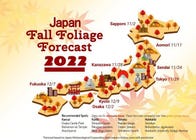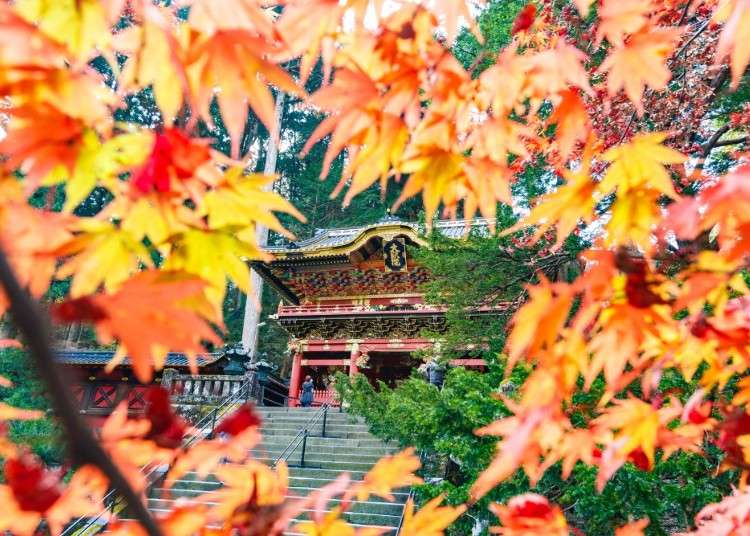
Nikko, a part of Tochigi Prefecture sitting north of Tokyo, hosts a plethora of renowned sights, including UNESCO World Heritage shrines and temples, the vast natural expanse of Lake Chuzenji, the milky hot waters of Okunikko Yumoto Onsen! Plus, during autumn, virtually every inch of Nikko bursts with magnificent fall foliage, attracting visitors from all over the world.
Nikko can be reached via an approximately 110-minute limited express train ride on the Tobu-Nikko Line from Asakusa Station to Tobu-Nikko Station. To tour the various sightseeing spots within Nikko, we recommend taking the Tobu Bus from Tobu-Nikko Station, which can be used at a discounted price with the thrifty NIKKO Discount Ticket.
Here, we’ll introduce and use the NIKKO Discount Ticket to check out some of the best autumn hotspots Nikko has to offer!
Main image: Tobu Railway
What Is the NIKKO Discount Ticket?
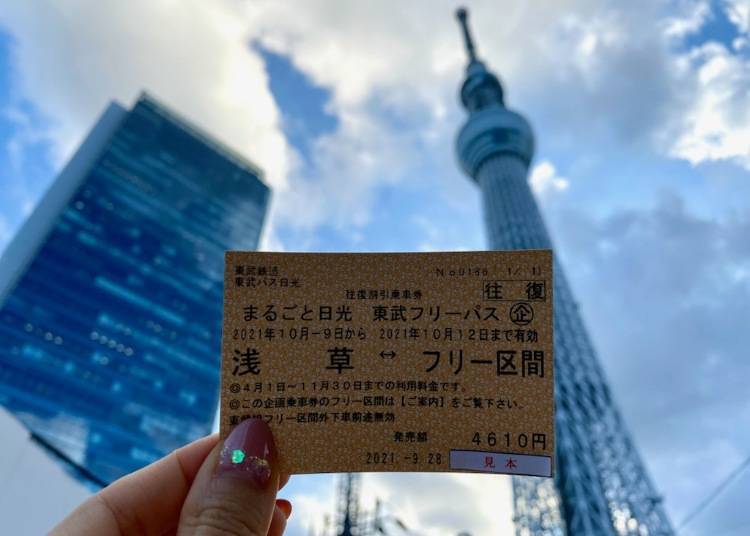
The NIKKO Discount Ticket allows you to freely hop on and off all Tobu railway and bus services in the Nikko region, along with additional discounts on Nikko facilities. It is valid for 4 days and includes the round-trip fare from the departing station to Nikko.
The free area on the Tobu Railway is between Shimo-Imaichi and Tobu-Nikko Station.
The Tobu Bus free area is as follows:
・Between Tobu-Nikko Station and Yumoto Onsen, Kotoku Onsen, Ozasa Farm (Kirifuri Falls in winter)
・Between Tobu-Nikko Station and Kiyotaki, Okuhosoo
・Between Chuzenji Onsen and Tachiki Kannon-mae and Hangetsuyama (during certain periods)
NIKKO Discount Ticket Price
The ticket price depends on the departing station, usage period, and passenger age. Departing from Asakusa Station on the Tobu Railway to Nikko will cost an adult 4,610 yen and a child 2,320 yen. The price of the special rapid service is not included, so you’ll need to purchase a separate special rapid ticket if you wish to use this service.
The main benefit of the NIKKO Discount Ticket is the ability to get off and on trains and busses as you like within the free area. It’s also cheaper and more convenient than purchasing new tickets each time. There are also discounts at associated facilities and additional transport along with 10% off souvenirs at stores bearing the “Yutai Omiyagehin-ten” (Special Souvenir Store) mark.
Where to get the NIKKO Discount Ticket
You can get the NIKKO Discount Ticket at the service counter of any station with a Tobu Line along with ticket machines at major stations selling commuter passes or at Tobu Top Tours, JTB, and Kinki Nippon Tourist.
The ticket machines can be used in English, Chinese (Traditional/Simplified), Korean, French, Spanish, and Thai.
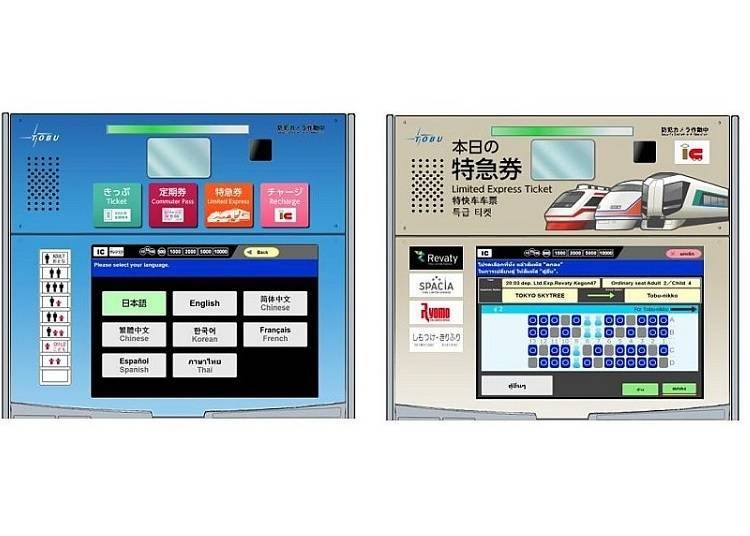
Be aware that discount services change during the year, with some facilities only available during winter while others are closed, etc.
You can find out more at the following website!
Read on to discover the places you can visit with the NIKKO Discount Ticket during autumn!
Recommended Places to Visit in Autumn With the NIKKO Discount Ticket: The Shrines and Temples of Nikko
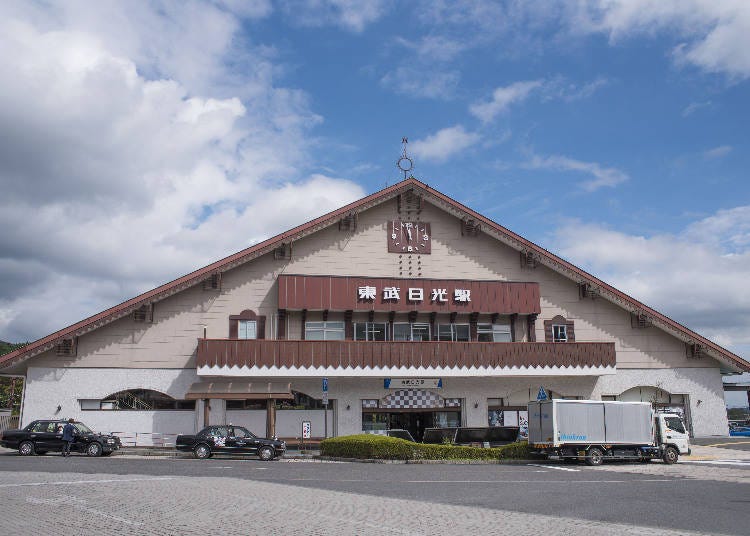
Naturally, the first place you’ll want to check out will be the Shrines and Temples of Nikko - Japan's 10th World Heritage Site! Within the area are 9 “National Treasure Buildings” and 94 Important Cultural Properties, attracting scores of visitors from both inside and outside Japan.
The Shrines and Temples of Nikko consist of Futarasan Jinja Shrine, Nikko Tosho-gu Shrine, and Nikkozan Rinnoji Temple. The best time to see the fall colors here is generally between late October and late November.
The Shrines and Temples of Nikko can be reached after disembarking at Tobu-Nikko Station and taking the Tobu Bus heading to either Chuzenji Onsen or Yumoto Onsen. After 7 minutes, get off at the Nishisando bus stop.
Alternatively, you can use the World Heritage Tour Bus, which departs and returns from JR/Tobu-Nikko Station and operates in the Nikko Sannai area, which is where the temples and shrines are located.
●Futarasan Jinja Shrine
Once you’ve arrived at the Nishisando bus stop, get off and walk for 7 minutes to start your tour at Futarasan Jinja Shrine, which deifies the god of marriage, “Onamuchi no Mikoto.” Definitely spend a few moments soaking in the bright vermillion Shinkyo Bridge alongside the pristine, clear river water adorned by a stunning tapestry of fall colors.
COVID-19 countermeasures are comprehensive, with frequent hand sanitizer stands and shrine staff constantly washing and disinfecting their hands, checking their temperatures and condition, and more.
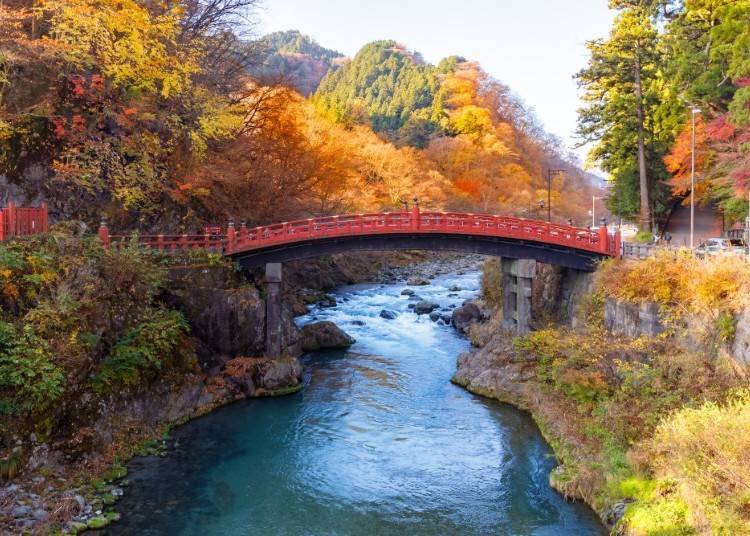
・Visiting Times: April-Oct: 8:00am - 5:00pm; Nov-March: 9:00am - 4:00pm
・Admission: Adults: 300 yen; Children (Elementary/Junior-High): 100 yen
・Closed: Open daily
-

-
Address
2307, Sannai, Nikko-shi, Tochigi, 321-1431
View Map -
Nearest Station
Nikko Station (JR Nikko Line)
- Phone Number 0288-54-0535
-
Address
2307, Sannai, Nikko-shi, Tochigi, 321-1431
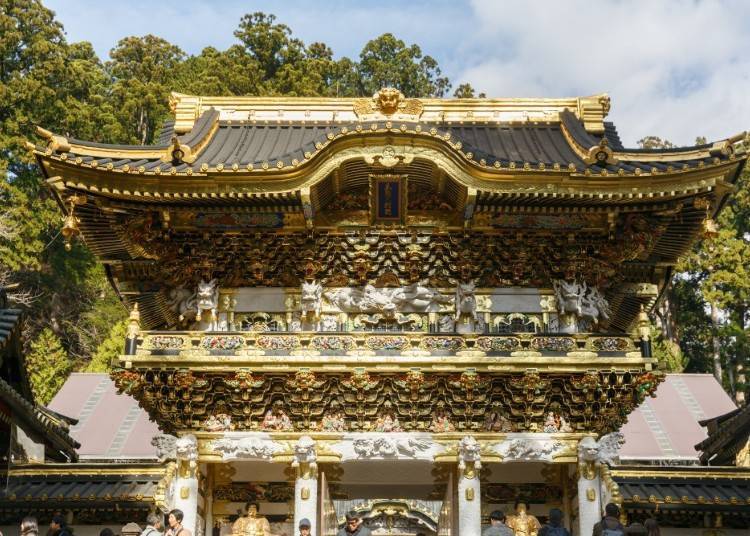
Nikko Toshogu Shrine, located a further 5 minutes away from Futarasan Jinja Shrine, is a mausoleum enshrining Taisho Daigongen, the defied iteration of legendary Japanese ruler Tokugawa Ieyasu. The highlights here are the stunning decorations adorning the Yomeimon Gate along with the three “See no evil, Hear no evil, Speak no evil” monkeys at the Shinkyusha Stable.
There are audio guides in Japanese, English, and Chinese available to rent for 500 yen providing explanations on each of the shrine’s 29 buildings. As part of COVID-19 countermeasures, plastic sheets are placed over face-to-face service counters, hand sanitizer is set up, staff all wear masks, and the hand-purification basin has been closed. In addition, shrine stamp books are no longer accepted, and paper editions are being distributed instead.
・Visiting Times: April-Oct: 9:00am - 5:00pm; Nov-March: 9:00am - 4:00pm
・Admission: Adults/High-school: 1,300 yen; Children (Elementary/Junior-High): 450 yen
・Closed: Open daily
-

-
Address
2301, Sannai, Nikko-shi, Tochigi, 321-1431
View Map -
Nearest Station
Nikko Station (JR Nikko Line)
20 minutes on foot
- Phone Number 0288-54-0560
-
Address
2301, Sannai, Nikko-shi, Tochigi, 321-1431
●Nikkozan Rinnoji Temple
Continuing on foot for a further 4 minutes will bring you to Nikkozan Rinnoji Temple. Opened in the second year of the Tenpyo-jingo era (765-767) by Buddhist monk Shodo, it flourished as the main temple of the Nikko Mountains.
The Taiyuin mausoleum of Tokugawa Iemitsu, the third Shogun of the Tokugawa family, features a distinctive “gongen-zukuri” construction style with a ceiling adorned with 140 pictures of dragons. For fans of the Japanese wabi-sabi aesthetic, definitely check out the Sanbutsu-do (Three Buddhas Hall), Kaisando, and Three-Story Pagoda.
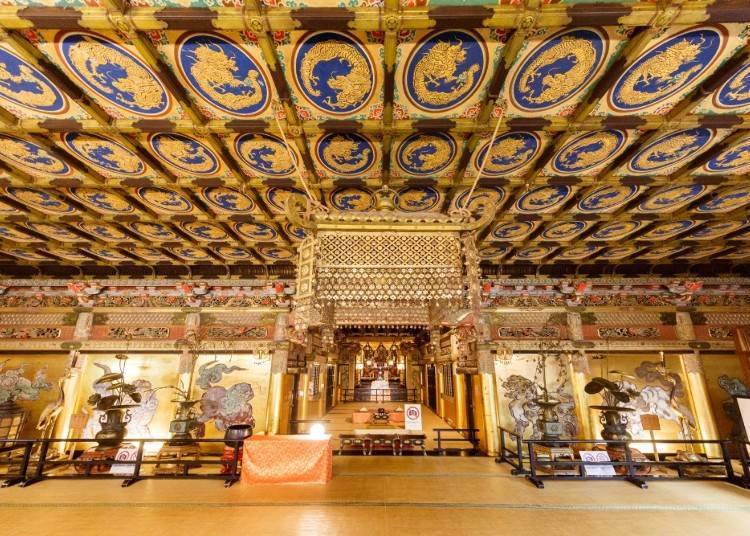
For 500 yen, you can also bask in the beauty of an illumination event at the Edo period Japanese garden “Shoyoen”.
Event dates and details may change without warning due to COVID-19, so check the official website before heading out.
・Visiting Times: April-Oct: 8:00am - 5:00pm; Nov-March: 8:00am - 4:00pm
・Admission: (Sanbutsu-do, Taiyu-in, Homotsu-den Set Ticket) Adults: 1,000 yen; Children (Elementary/Junior-High): 500 yen
-
Nikkozan Rinnoji日光山輪王寺
- Address 2300, Sannai, Nikko, Tochigi Prefecture, 321-1431, Japan
Akechidaira - Lake Chuzenji: Grand Nature and Incredible Fall Scenery
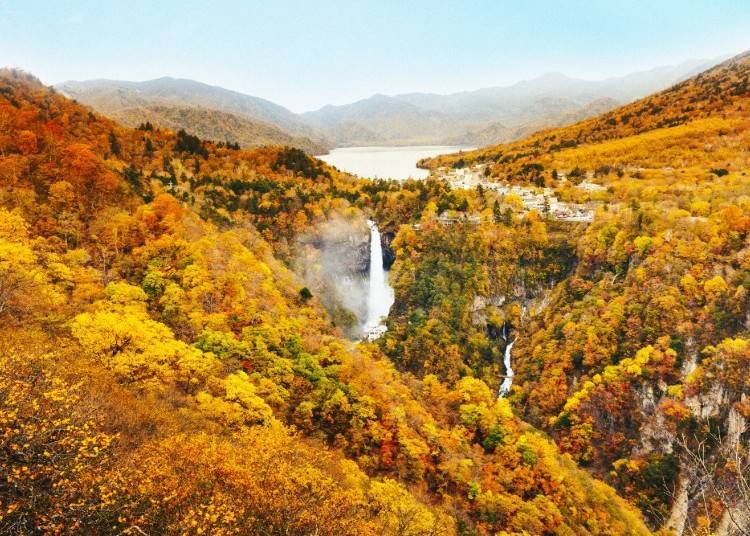
To get to Akechidaira from Nikkozan Rinnoji Temple, take the Tobu Bus from the Nishisando bus stop heading for Chuzenji Onsen and get off after approximately 30 minutes at the Akechidaira bus stop. If you’re coming from Tokyo directly to Akechidaira and Lake Chuzenji using the NIKKO Discount Ticket, get off at Tobu-Nikko Station and take the Tobu Bus for Chuzenji Onsen or Yumoto Onsen until the Akechidaira bus stop.
Using the Akechidaira Ropeway directly in front of the stop, you’ll be able to reach the Akechidaira Ropeway Observation Deck in just 3 minutes!
Ropeway passengers will be treated to magnificent panoramic views of the glorious Nikko autumn scenery. The observation deck itself looks out over Kegon Falls, which falls from Lake Chuzenji, along with further views of the grand Mt. Nantai and more.

Using the pass, you’ll get a 10% discount on the ropeway ticket (600 yen one-way, 1,000 yen return). The peak autumn viewing time is generally from mid-October to early November. During this period, the ropeway often starts running earlier and for longer, so check the updated times in advance.
Keep in mind that you cannot ride with pets, and there are capacity restrictions underway in line with COVID-19 countermeasures.
-
Akechidaira Ropeway明智平ロープウェイ
- Address Hosomachi, Nikko, Tochigi Prefecture, 321-1445, Japan
- Phone Number 0288-55-0331
・Hours: 9:00am - 3:30pm
・Admission:
- Adults: 600 yen (one-way), 1,000 yen (return)
- Children (6-11): 300 yen (one-way), 500 yen (return)
・Details: https://www.nikko-kotsu.co.jp/ropeway/
・Closed: Temporary closures may occur due to stormy weather or inspection/maintenance.
Senjogahara: Unwind on a Walk Through Blissful Nature!
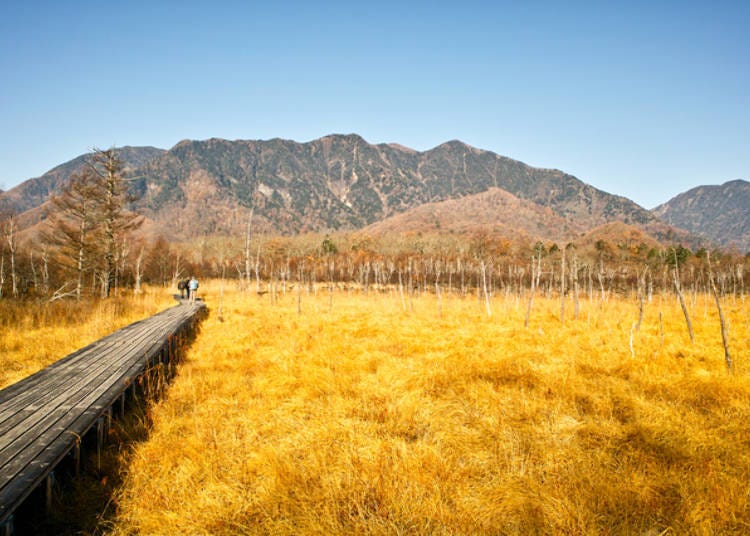
To travel to Senjogahara, located northwest of Akechidaira, purchase a ticket for the Teikogai Hybrid Bus (Low Emission Bus) from the Akanuma Nature Information Center. The center can be found after a minute’s walk from the Akanuma bus stop, which itself can be reached in roughly 24 minutes by taking the Tobu Bus from the Akechidaira bus stop.
By presenting your NIKKO Discount Ticket, you’ll also get 10% off the fare (adults: 500 yen, children: 250 yen - one-way flat rate). The journey will take approximately 60 minutes if you board from Tobu-Nikko Station.
Senjogahara consists of a vast marshy grassland of around 400 hectares. According to Japanese mythology, it is said that the gods once fought over Lake Chuzenji, which is why the name Senjogahara means “the battlefield” in Japanese. Nowadays, the area is a National Park and registered under the Ramsar Convention, an international treaty for wetland conservation.
There is a two-hour hiking course through the wetland, where you can spot over 350 different species of vegetation, listen to the songs of native birds, and relish the invigorating fragrance of the forest. The autumn colors at Senjogahara are at their best around mid-October to early November.
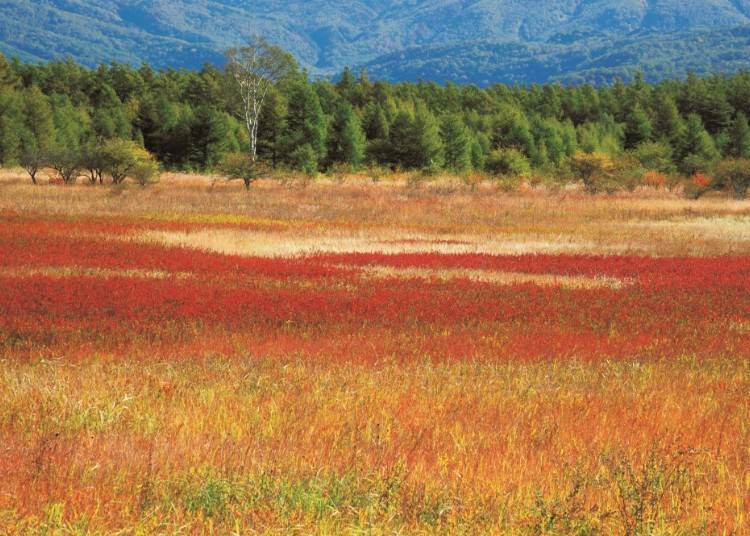
In Odashirogahara, which is adjacent to the west side of Senjogahara, you can view the famous birch tree known as “Lady” (Kifujin). This area can be found by again taking the Teikogai Hybrid Bus, which can be hailed and ridden anytime, from the Akanuma Shako bus stop to Odashirogahara.
The peak time to see the grass here change color is between late September and mid-October. Both Odashirogahara and Senjogahara have an altitude of roughly 1,400m, so take care to bring appropriate warm clothing.
-
Akanuma Nature Information Center赤沼自然情報センター
- Address Chugushi, Nikko, Tochigi Prefecture, 321-1661, Japan
・TEL: 0288-55-0880 (Nikko Natural Science Museum)
・Counter Hours: 9:00am - 4:00pm
・Bus Waiting Area: Teikogai Bus first departure - until 5:00pm
・Admission: Free
For details on the low-emissions bus and fare/operation: https://www.pref.tochigi.lg.jp/d04/eco/shizenkankyou/shizen/bus.html
・Closed:
- Counter: Every Monday between April 26 - June and November (next day if Monday is a public holiday), no closures between June 1 - Oct 31
- Bus Waiting Area: None during the operating period
Soak Away Fatigue in Nikko’s Onsen Hot Springs!

The best way to regain energy after a busy day traveling is with a soak in the onsen hot spring! For tranquility complemented by fiery fall foliage, we recommend stopping by Okunikko Yumoto Onsen. The leaves here begin to change color in early October and last for the entire month.
Okunikko Yumoto Onsen is a hot spring district located in the northern area of Senjogahara. It has been adored by both locals and travelers for over 1,200 years, ever since the aforementioned legendary Buddhist monk Shodo. Being a sulfur spring, the ample waters boast a milky, cloudy hue. As the water is extremely hot (between 49.3° - 78.9°C), feel free to add some extra water to dilute it until you find a comfortable temperature.
Nearby hotels like the Nikko Astraea Hotel and Chuzenji Kanaya Hotel take water directly from Okunikko Yumoto Onsen, allowing guests to enjoy free-flowing hot springs straight from the source. Both have day-trip plans, so you don’t have to stay the night to relish these outside, open-air baths. As it's beyond the Teikogai Bus route, make sure you take the Tobu Bus when heading to this area.
-

-
Address
Kotoku Onsen, Nikko-shi, Tochigi, 321-1661
View Map -
Nearest Station
Tobu Nikko Station (Tobu Nikko Line)
-
Address
Kotoku Onsen, Nikko-shi, Tochigi, 321-1661
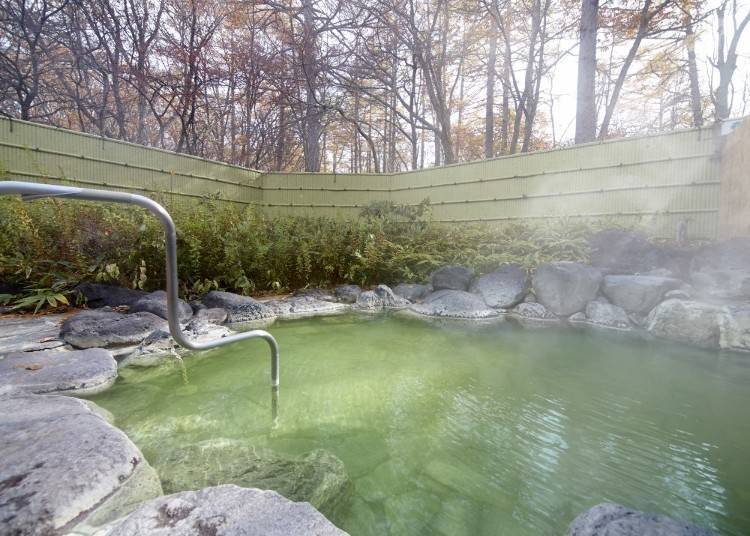
-
 Minshuku Shirakaba民宿 白樺<栃木県>
Minshuku Shirakaba民宿 白樺<栃木県>-
Address
2482 Chugushi, Nikko City, Tochigi, 321-1661
-
Nearest Station
Mato Station (Watarase Keikoku Railway Watarase Keikoku Line)
-
Address
2482 Chugushi, Nikko City, Tochigi, 321-1661
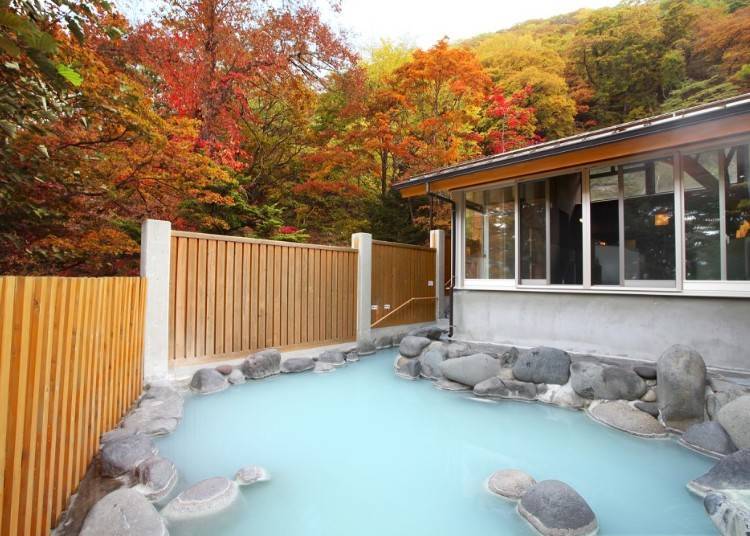
When exploring the charms of Nikko, whether it be autumn or another time, the easiest and most efficient way to get around is with the NIKKO Discount Ticket. Most of the sites listed in this article can be accessed with the ticket from Tobu-Nikko Station on the Tobu Bus. Plus, you’ll also get discounts for surrounding facilities and the corresponding Teikogai Bus.
After exploring history, nature, and culture, rest your tired body in the warm, nourishing hot spring waters of Okunikko Yumoto Onsen while thoroughly absorbing the glorious fall splendor!
*The information presented in this article is accurate as of October 2021. Please confirm the latest details on official websites before making plans.
*Prices and options mentioned are subject to change.
*Unless stated otherwise, all prices include tax.
Popular Tours & Activitiess
Recommended places for you
-

2025 Autumn Colors Report: Kurobe Gorge Nearing Peak
by: Timothy Sullivan
-

Don't Miss Out! The One Thing You Must Do Before Shopping at Mitsui Shopping Park LaLaport: Get Your Max 10% OFF Coupon Book
-

Enjoy Japan's Gorgeous Winter Lights! Ride the Romancecar to Shonan no Hoseki Illumination
by: Guest Contributor
-
Ad

Walk in the Footsteps of Believers: A 4-Day Pilgrimage Across Goto Islands, Nagasaki Prefecture
by: Yohei Kato
-

A Travel Game Changer! Go Hands-Free Between Tokyo and Kyoto with LUGGAGE EXPRESS by JTB and JR Tokai
by: Guest Contributor
-

2025 Japan Autumn Color Report: Tokyo's Ginkgo Trees Starting to Glow
by: Timothy Sullivan
Inspiration for Accommodations
-

Enjoy Mt. Fuji from the Comfort of Your Room! Recommended Ryokan with Mt. Fuji View
-

Stay Near the Cherry Blossoms! Hotels for Cherry Blossom Viewing in Tokyo
-

Family-Friendly Hotels with Free Shuttle to Disneyland: Convenient Access for a Magical Stay
-

Top Ranked Hakone Hotels with Mt. Fuji View: Enjoy Stunning Scenery from Your Private Space
-

Convenient Tokyo Hotels with Airport Shuttle: Ideal for Families and Heavy Luggage
-

Stunning Tokyo Tower View Hotels: Enjoy Spectacular Scenery from Your Private Space
-

Convenient Asakusa Hotels with Kitchens: Ideal for Extended Family Visits
-

Experience Luxury: Hakone's 10 Best Five-Star Accommodations
-

Enjoy Mt. Fuji Autumn Leaves! Top Hotels Near the Popular Autumn Leaves Corridor
-

Experience Hakone Fall Foliage from Your Room with Stunning Views
-

10 Important Japanese Phrases to Know Before You Enter a Japanese Convenience Store!
by: Teni Wada
-

Best Things to Do and See Around Tokyo in September: Events and Festivals in Kanto
-

Beyond the Guidebook: 5 Expats Share Their Favorite Halloween Traditions in Japan!
by: Nina Cataldo
-

Visiting Tokyo in September: Best of Autumn in Tokyo
by: Sohail Oz Ali
-

Spending Wonderful Time Alone in Shibuya - Free Cosmetics and a Hundred-Yen Bus!
-

November Events in Tokyo: Fun Festivals, Food, and Things to Do
- #best ramen tokyo
- #what to buy in ameyoko
- #what to bring to japan
- #new years in tokyo
- #best izakaya shinjuku
- #things to do tokyo
- #japanese nail trends
- #what to do in odaiba
- #onsen tattoo friendly tokyo
- #daiso
- #best sushi ginza
- #japanese convenience store snacks
- #best yakiniku shibuya
- #japanese fashion culture
- #best japanese soft drinks















